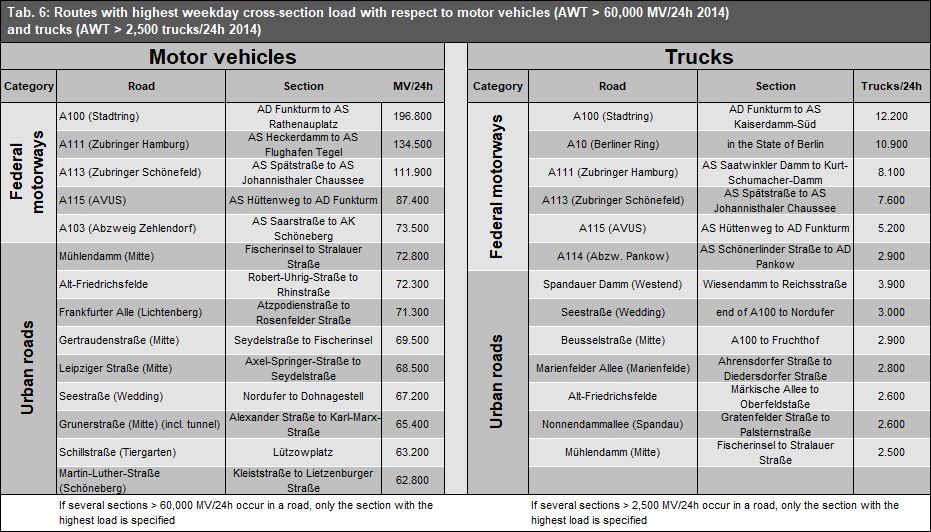The traffic load is not evenly distributed across the Berlin road network. There is a clearly visible concentration on the route sections of the city expressway and on the routes leading to the city centre from the surrounding areas, which mostly serve as federal highways.
Table 6 illustrates the road sections with the highest weekday traffic loads with respect to the overall data for motor vehicles and trucks. The weekday loads on the sections of the A100 between Alboinstraße and Tempelhofer Damm and between Dreieck Charlottenburg and Spandauer Damm are among the highest nationwide with more than 167,000 motor vehicles/24 h. These sections are thus among the three road sections with the highest daily loads in Germany (a list of the “Top 10 of the daily traffic load (ADT) in the German highway system in 2015” can be found here). With respect to the peak truck loads, the distribution on the individual highway sections is similar; however, it is different on urban roads, as the location of inner-city commercial and industrial areas influences the distribution of truck journeys.

